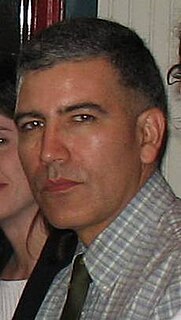Solid-state dye lasers (SSDL) were introduced in 1967 by Soffer and McFarland. [1] In these solid-state lasers, the gain medium is a laser dye-doped organic matrix such as poly(methyl methacrylate) (PMMA), rather than a liquid solution of the dye. An example is rhodamine 6G-doped PMMA. These lasers are also referred to as solid-state organic lasers and solid-state dye-doped polymer lasers.

A dye laser is a laser which uses an organic dye as the lasing medium, usually as a liquid solution. Compared to gases and most solid state lasing media, a dye can usually be used for a much wider range of wavelengths, often spanning 50 to 100 nanometers or more. The wide bandwidth makes them particularly suitable for tunable lasers and pulsed lasers. The dye rhodamine 6G, for example, can be tuned from 635 nm (orangish-red) to 560 nm (greenish-yellow), and produce pulses as short as 16 femtoseconds. Moreover, the dye can be replaced by another type in order to generate an even broader range of wavelengths with the same laser, from the near-infrared to the near-ultraviolet, although this usually requires replacing other optical components in the laser as well, such as dielectric mirrors or pump lasers.
A solid-state laser is a laser that uses a gain medium that is a solid, rather than a liquid such as in dye lasers or a gas as in gas lasers. Semiconductor-based lasers are also in the solid state, but are generally considered as a separate class from solid-state lasers.

Laser dyes are large organic molecules with molecular weights of a few hundred mu. When one of these organic molecules is dissolved in a suitable liquid solvent it can be used as laser medium in a dye laser. Laser dye solutions absorb at shorter wavelengths and emit at longer wavelengths. Successful laser dyes include the coumarins and the rhodamines. Coumarin dyes emit in the green region of the spectrum while rhodamine dyes are used for emission in the yellow-red. The color emitted by the laser dyes depend upon the surrounding medium i.e.the medium in which they are dissolved. However, there are dozens of laser dyes that can be used to span continuously the emission spectrum from the near ultraviolet to the near infrared.
Contents
- Organic gain media
- High performance solid-state dye laser oscillators
- Distributed feedback and waveguide solid-state dye lasers
- See also
- References









